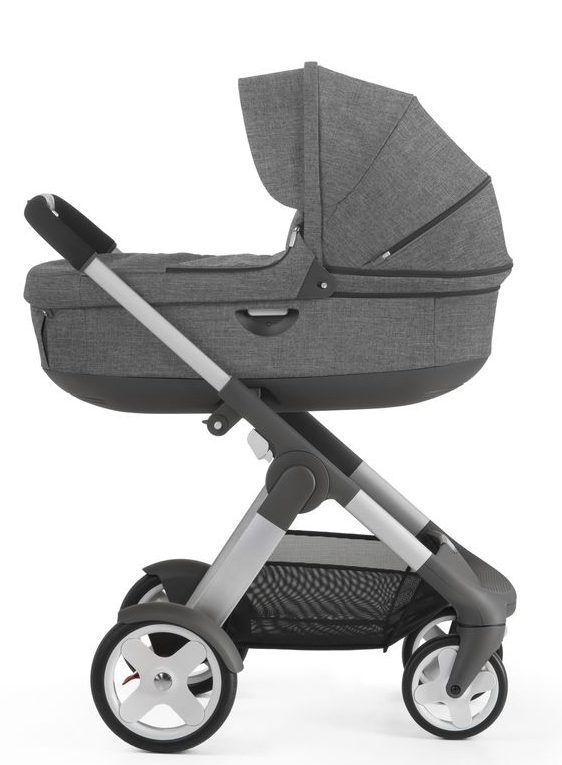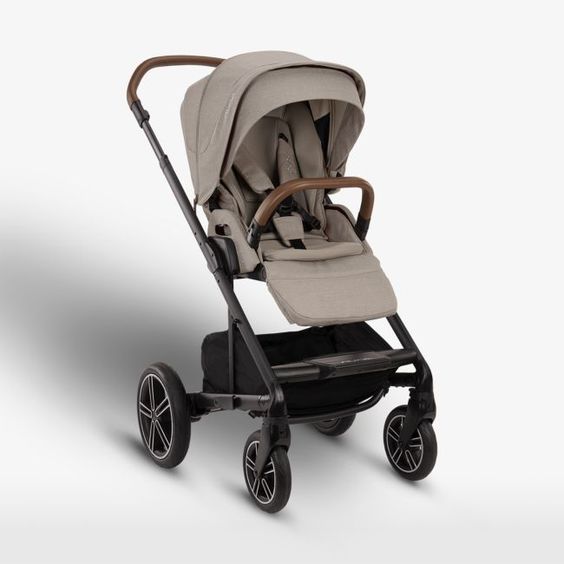
When it comes to transporting your baby, there are a few options to consider. Two popular choices are prams and strollers. Both have their own unique features and benefits, but how do you know which option is best for your baby's comfort and safety? In this article, we will explore the differences between prams and strollers, discuss their features and benefits, and provide some tips on what to look for when choosing the right option for your little one.
What is a Pram?

A pram, also known as a baby carriage or a bassinet, is a traditional mode of transportation for infants. It usually features a fully reclining seat or a bassinet attachment, allowing your baby to lie flat comfortably. Prams often have large, sturdy wheels that provide a smooth ride on various terrains, making them ideal for long walks or outdoor activities. They also offer ample storage space, which can be convenient for carrying essentials like diapers, bottles, and toys.
One of the key benefits of a pram is its ability to provide a cozy and secure environment for your baby. The fully reclining seat or bassinet allows your little one to lie flat, promoting better spinal alignment and reducing the risk of flat head syndrome. The enclosed design of a pram also offers protection from the elements, keeping your baby shielded from harsh weather conditions like rain, wind, or excessive sunlight. Additionally, prams often come with adjustable canopies or hoods, providing extra shade and privacy for your baby.
What is a Stroller?

A stroller, also referred to as a pushchair or a buggy, is a more versatile option for transporting your baby. Unlike prams, strollers usually have a seat that allows your baby to sit upright. They come in various designs and styles, catering to different needs and preferences. Some strollers are lightweight and compact, perfect for traveling or navigating tight spaces, while others are more robust and feature-packed, offering additional features like adjustable handlebars, multiple recline positions, and suspension systems for a smoother ride.
Strollers offer several benefits that make them a popular choice among parents. The ability to sit upright in a stroller allows your baby to observe their surroundings and interact with you and others. This can be beneficial for their cognitive and social development. Strollers are also typically easier to maneuver, thanks to their lightweight construction and swivel wheels. They often come with features like adjustable seat belts, removable trays, and cup holders, providing added convenience for both you and your baby.
Features and Benefits of a Pram
A pram, short for perambulator, is a type of baby carriage designed for newborns and infants. Prams typically have a flat, fully-reclining bassinet-like seat and larger, sturdy wheels. Here are some features and benefits:
Bassinet-style Seat
-
Feature: Prams usually have a bassinet-style seat that allows newborns to lie flat.
-
Benefit: This provides a comfortable and safe sleeping environment for infants, promoting better spinal development.
Large, Sturdy Wheels
-
Feature: Prams often have larger wheels compared to strollers, providing a smoother ride, especially on uneven surfaces.
-
Benefit: The larger wheels make it easier to maneuver the pram, and they absorb shocks better, ensuring a more comfortable experience for the baby.
Adjustable Canopy
-
Feature: Prams typically come with an adjustable canopy to protect the baby from the sun and other weather elements.
-
Benefit: The canopy helps create a shaded and comfortable space for the baby, protecting them from harsh sunlight or light rain.
Spacious Storage Basket
-
Feature: Many prams include a spacious storage basket beneath the seat.
-
Benefit: Parents can easily carry essentials like diapers, baby wipes, bottles, and other items, making outings more convenient.
High Weight Capacity
-
Feature: Prams are often designed to carry higher weight capacities compared to some strollers.
-
Benefit: This allows the pram to accommodate the baby as they grow, potentially extending its usability.
Classic Design
-
Feature: Prams often have a classic and stylish design.
-
Benefit: The aesthetic appeal of prams is appreciated by many parents who prefer a traditional and elegant look for their baby gear.
Features and Benefits of a Stroller
A stroller is a wheeled vehicle designed for the easy transport of infants or toddlers. Strollers come in various types, including lightweight, umbrella, jogging, and travel systems. Here are some features and benefits:
Portability and Compact Design
-
Feature: Strollers are generally more compact and lighter than prams.
-
Benefit: This makes strollers easier to carry, fold, and store, which is particularly useful for parents on the go.
Reclining Seat Positions
-
Feature: Strollers often have adjustable seat positions, including a reclining option.
-
Benefit: The ability to recline the seat provides flexibility for the child to sit upright, recline for naps, or adjust to various comfortable positions.
Five-Point Harness
-
Feature: Strollers usually come with a secure five-point harness system.
-
Benefit: The harness ensures the safety of the child by securely restraining them in the seat, reducing the risk of accidental falls.
Maneuverability
-
Feature: Strollers are designed for easy maneuverability, especially in crowded places.
-
Benefit: This makes it convenient for parents to navigate through shopping malls, parks, and other public spaces with ease.
Travel System Compatibility
-
Feature: Many strollers can be converted into a travel system by attaching a car seat.
-
Benefit: This allows seamless transitions between car and stroller, making it convenient for parents with infants.
Canopy and Peek-a-Boo Window
-
Feature: Strollers often have a canopy with a peek-a-boo window.
-
Benefit: The canopy provides shade, and the window allows parents to keep an eye on their child without disturbing them.
Adjustable Handlebars
-
Feature: Some strollers come with adjustable handlebars.
-
Benefit: Adjustable handlebars accommodate parents of different heights, promoting comfortable pushing and steering.
Pram vs Stroller: What’s the Differences
While both prams and strollers serve the purpose of transporting your baby, there are some key differences between the two:
Design and Configuration
-
Pram: Prams typically have a bassinet-style seat that allows the baby to lie flat. The design is often characterized by a larger, more traditional carriage with a classic and elegant appearance.
-
Stroller: Strollers, on the other hand, have a more varied design. They can have a seat that reclines to various positions, including an upright position for older babies. Strollers may also come in different styles such as umbrella strollers, jogging strollers, and travel systems.
Age Suitability
-
Pram: Prams are generally designed for newborns and younger infants. The flat, fully-reclining seat is suitable for babies who cannot sit up on their own.
-
Stroller: Strollers cater to a wider age range, accommodating infants, toddlers, and even older children. Many strollers have adjustable seat positions to suit the child's age and developmental stage.
Portability
-
Pram: Prams are often larger and less portable compared to strollers. They may be bulkier and heavier, making them less convenient for travel or navigating through crowded spaces.
-
Stroller: Strollers are designed for portability and ease of use. They are generally lighter, more compact, and easier to fold, making them suitable for parents on the go.
Wheel Size and Suspension
-
Pram: Prams often have larger, sturdy wheels designed to provide a smooth ride. Some prams may even have suspension systems to absorb shocks and bumps.
-
Stroller: Strollers may have smaller wheels, especially in the case of umbrella strollers. However, jogging strollers and some travel systems may have larger wheels with enhanced suspension for a smoother ride.
Harness System
-
Pram: Prams may come with a harness system, but the emphasis is often on providing a secure, enclosed space for the baby rather than a five-point harness commonly found in strollers.
-
Stroller: Strollers typically feature a secure five-point harness system that ensures the baby is safely strapped into the seat.
Versatility
-
Pram: Prams are specialized for infants and newborns, offering a comfortable and secure space for them to lie flat.
-
Stroller: Strollers are more versatile and can adapt to the changing needs of the child as they grow. They often have adjustable seat positions, can accommodate car seats to create travel systems, and are suitable for various terrains and activities.
What to Look for When Choosing a Pram or Stroller for Your Baby
When deciding between a pram and a stroller, there are a few factors to consider:
-
Age and Developmental Stage - If you have a newborn or an infant, a pram with a fully reclining seat or a bassinet attachment would be a suitable choice. For older babies who can sit upright, a stroller with an adjustable seat would be more appropriate.
-
Lifestyle and Usage - Consider your lifestyle and how you plan to use the pram or stroller. If you enjoy long walks or outdoor activities, a pram with large wheels and sturdy construction would be beneficial. If you frequently travel or navigate tight spaces, a lightweight and compact stroller would be more practical.
-
Safety Features - Look for safety features like adjustable seat belts, brakes, and sturdy construction. Ensure that the pram or stroller meets the necessary safety standards and has undergone rigorous testing.
-
Comfort and Convenience - Evaluate the comfort features for both you and your baby. Look for adjustable canopies or hoods, padded seats, and storage compartments. Consider features like adjustable handlebars, removable trays, and cup holders for added convenience.
Conclusion
Choosing between a pram and a stroller ultimately depends on your baby's age, developmental stage, and your specific needs and preferences. Prams provide a cozy and secure environment for newborns and infants, while strollers offer more versatility and convenience for older babies. Consider factors like age, lifestyle, safety features, and comfort when making your decision. Remember, the most important aspect is your baby's comfort and safety. Take your time, do your research, and select the option that best suits your baby's needs. Happy strolling!